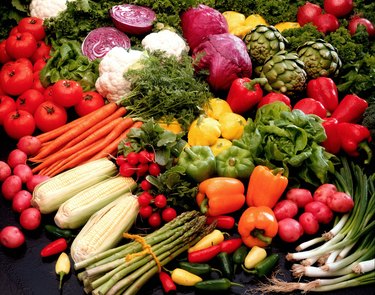
Convection steamers and pressure steamers use steam to thaw or cook food. Both appliances heat food faster than gas or electric ovens, because steam transfers heat much more effectively than air. In convection steamers, the steam circulates at normal atmospheric pressure by means of convection, often with the aid of a small fan. Pressure steamers are tightly sealed, which allows for a much greater buildup of heat and pressure. This difference in operating principles accounts for most of the practical differences between these appliances.
Cooking Time and Temperature
Video of the Day
Convection steamers cook food without pressure at 212 degrees Fahrenheit near sea level. Pressure steamers can reach 228 to 250 degrees Fahrenheit and generate pressures of 2 to 15 pounds per square inch. Because they operate at a lower temperature, convection steamers take longer to cook certain foods. For example, potatoes, pasta and rice will generally cook much faster in a pressure steamer. Pressure steamers are also preferable for larger, tougher cuts of meat, which cook faster and with less shrinkage than they would in a traditional oven.
Video of the Day
Pressurization
Convection steamers cook at or near standard atmospheric pressure, so you can open them to test or season food without causing a drop in cooking temperature. By contrast, a cook who wants to look inside a pressure steamer must first depressurize it, which -- in addition to being dangerous -- causes the steamer to lose heat.
Food Quality
Convection steamers tend to produce better-quality results, because the high level of moisture and lower cooking temperature protect flavor, appearance, texture and nutrients. This makes them ideal for delicate foods that may be damaged by pressure steamers, such as seafood or green vegetables. In addition, convection steamers don't transfer taste when cooking multiple types of food; in pressure steamers, the taste of one food can sometimes contaminate another. Last, convection ovens are often preferable for heating frozen foods; at higher heat and pressure, the outside of larger frozen items may overcook before the interior is ready to eat.
Applications
Pressure steamers are very useful for preparing quick, economical meals for many people at once, which is why they're widely used in hotels, schools, hospitals and similar facilities. Convection steamers are usually smaller, safer, easier to use and less expensive and are therefore better suited to households and small-batch commercial cooking.